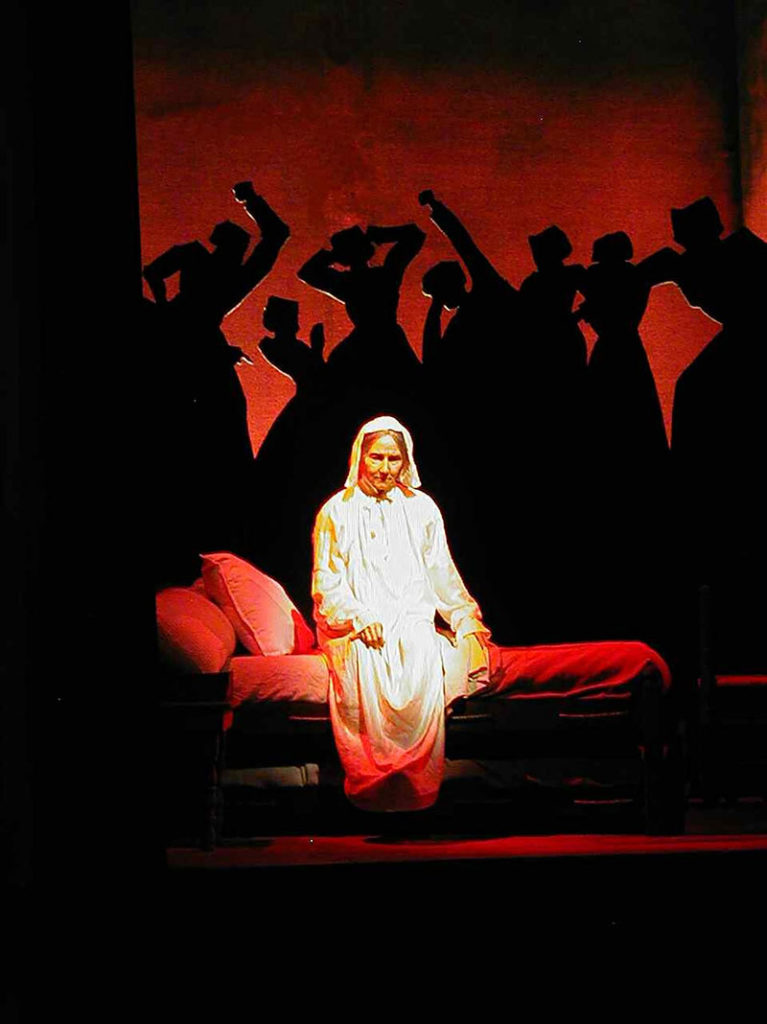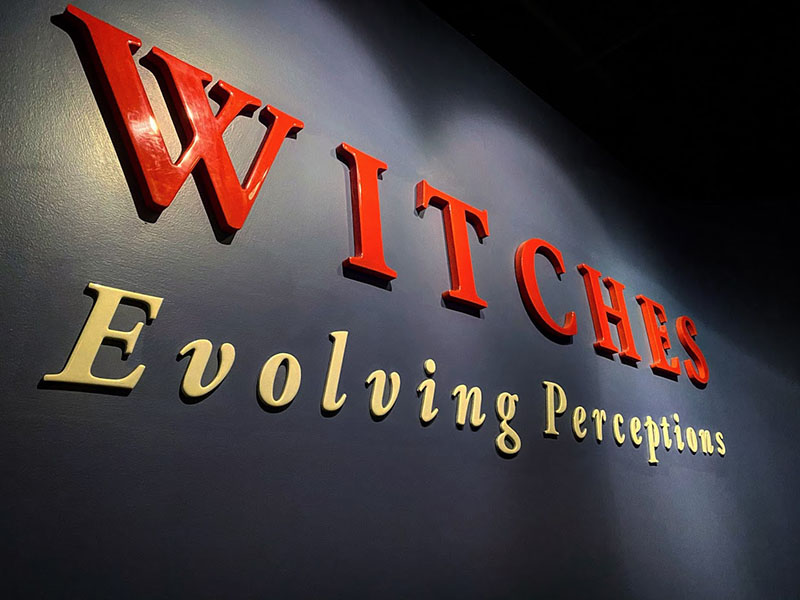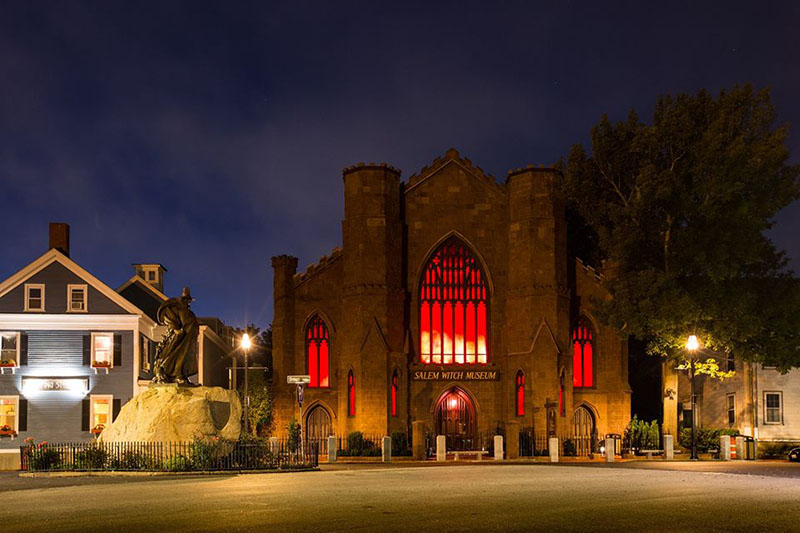From the accused men and women of the Salem Witch Trials to the green-skinned Wicked Witch of the West to Sabrina the Teenage Witch, witch representation has changed drastically in the past few hundred years. The Salem Witch Museum in Salem explains how we got here.
Celebrating its 50th anniversary this year, the Salem Witch Museum sits in a huge, foreboding stone building at the corner of Washington Square and Brown Street, across from the Salem Common. Formerly the Second Unitarian Church, the building dates to the 1840s. After a brief stint as an antique car museum in the 1950s, the witch museum opened in 1972. Since then, the focus has been on detailing the significance of the Salem witch trials to the visitors who flock to Witch City year after year.
“We give people an end-to-end overview of what happened in 1692,” says Rachel Christ-Doane, director of education at the Salem Witch Museum. “The idea is that learners of any age can understand the history of the trials. It makes the story, which is complicated and tragic, palatable in 20 minutes.”

When visitors first enter the museum, they’ll see in the lobby lists of everyone involved in the witch trials, which occurred from February 1692 through May 1693—the accused, the accusers, and those who died. While 30 victims died during the trials, 19 of whom were hanged on Proctor’s Ledge, between 150 and 200 people were accused of witchcraft during the yearlong hysteria—including the governor’s wife.
Over the years, most of the accused have been legally pardoned. Earlier this year, the last of these accused witches was exonerated by legislation signed by Gov. Charlie Baker.
The museum regularly sees descendants of players in the trials, whether they’ve always known their family has ties to the trials, or they’ve researched their family history since the rise of genealogy companies like Ancestry.com.
“We started catering to descendants because we want to be a resource for them,” says Christ-Doane, noting that the museum carries booklets with detailed information about many of the trials’ key players, designed for descendants to learn more about their ancestors.
From the lobby, visitors enter a dark, theatrical room for the first half of their museum tour—an immersive production featuring life-sized sets, lighting, and narration, transporting visitors back to the 1690s for 20 minutes. Note that this part of the storytelling is spooky, beginning with a vignette of the devil, and may not be suitable for all audiences.

Afterward, visitors head to the “Witches: Evolving Perceptions” exhibit, which explores the evolution of witch imagery over time, from the early European witch hysteria in the 1300s to current Pagan practitioners to more modern-day examples of “witch hunting” like the McCarthyism of the 1950s.
The end of the exhibit presents a formula that explains witch hunt–like behavior: “fear + trigger = scapegoat.” In 1692, that formula played out as a fear of the devil in Salem’s Puritan culture, plus Dr. Griggs’s diagnosing two young girls as possessed, equaling the scapegoating of dozens of townspeople.
The museum shop sells a range of books on Salem’s history, along with mainstay witchcraft books like Wicca: A Guide for the Solitary Practitioner by Scott Cunningham, paying homage to Salem’s strong presence of Pagan and Wiccan religions today. In 2017, Vox published an article called “There weren’t any witches in Salem in 1693. But there sure are now.”
Movie posters for flicks like Practical Magic and The Witches of Eastwick line the walls leading to the bathrooms, and the shop has all the kitschy witch paraphernalia a tourist could dream of, from Hocus Pocus t-shirts to Harry Potter gear to magnets, mugs, and keychains. The appearance of the gift shop items just after the stories of gruesome hangings is jarring—but says almost more than a museum exhibit could about the shift in pop culture’s perception of witches and witchcraft.
Tickets to the museum are available day-of and online only, with timed entries every half-hour. Though the museum is open year-round, its typical 10 a.m. to 4:30 p.m. hours are extended in October—but if you’re a local, we recommend visiting during any other month. It’ll still be just as spooky.
More information at salemwitchmuseum.com.

